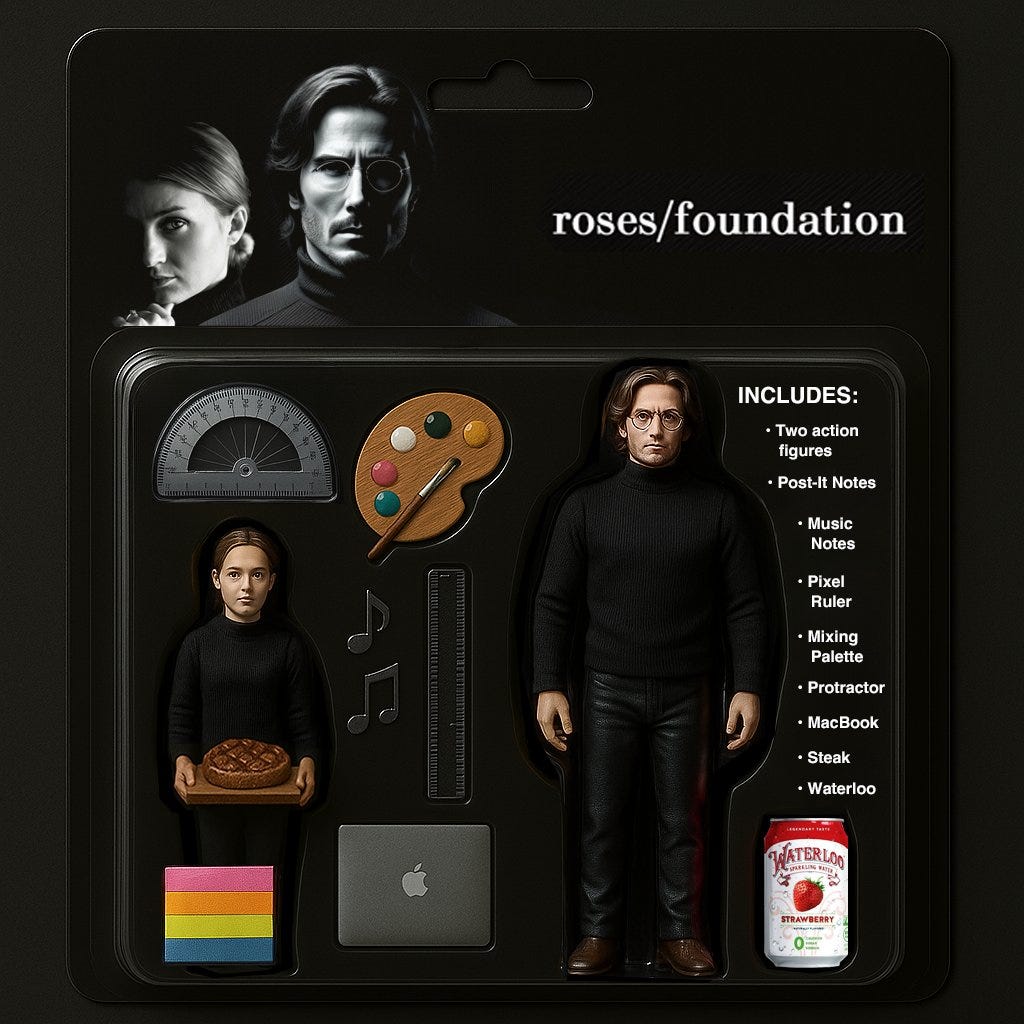Regarding Studio Ghibli, Breaking the Rules (and Making History)
Keynote mishaps, action figures and adapting to change
There's truth in the old adage that imitation is the sincerest form of flattery. The reality I've observed is that great artists don't merely copy—they steal, they internalise, and through blood, sweat and real tears the best designers I've ever known get comfortable bending the rules; they excel at breaking them entirely to push boundaries and redefine what's possible.
I won’t sit here and get sanctimonious about people stealing artistic styles from design firms they like while my own work has permanently influenced the field of application design because others 'borrowed' signature styles and design patterns of mine to inform their design process.
Imitation is the best form of flattery, great artists steal and the best designers I know are just a little better at rule-breaking.
Which brings us back to January 2000, a keynote that marked the first public showcase of my work. The excitement quickly turned to tension—it was the only Apple keynote in history where WebObjects service instances completely stopped working mid-presentation. Steve Jobs called out Eddy Cue from the stage, placing responsibility squarely on Eddy's team.
The first keynote (January 2000) where my work was going to be shown and also the only keynote where the service instances for WebObjects stopped working and Steve had to call Eddy Cue’s name from the stage. It’s the only time in Apple history that you will ever hear about a Demo failing because of Eddy Cue’s team.
Eddy threatened to fire anyone responsible for a service instance not working and the team has been the most valuable service applications, product team in the world ever since.
The immediate aftermath backstage was formidable. Eddy, understandably frustrated, made it clear that anyone responsible for another such failure would face immediate termination. Never again would his name be called out from the stage of an Apple keynote. Far from collapsing under pressure, his team seized the moment as a catalyst, rapidly evolving into one of the most innovative, reliable, and valuable service application teams in the world.
Through time I have learned that inspiration and change aren't opposites—they're essential companions. Borrowing design patterns and visual metaphors is not merely inevitable; it’s necessary for growth, just as mistakes aren't setbacks but important stepping stones in creating paradigm shifts.

To fear change is to become its victim.
From action figures with rule-breaking machines to software revolutions, my experiences teach that borrowing design patterns and learning from failure is not only inevitable but transformational and essential. Inspiration and setbacks both serve as catalysts, fueling extraordinary breakthroughs when embraced boldly.







